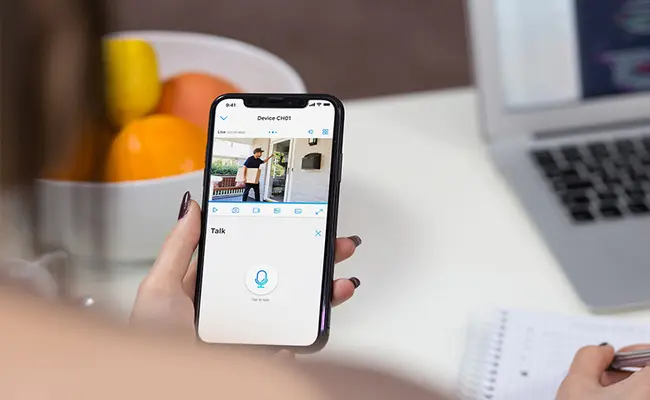VirtualVoice: Elevating Communication with Virtual Telephony Services

Virtual telephony is a transformative technology in the evolving business communication landscape. As traditional phone systems become relics of the past, virtual telephony offers a flexible, scalable, and cost-effective solution. This guide dives deep into the world of virtual telephony, illustrating its importance and the advantages it brings to modern businesses.
- What is Virtual Telephony?
- Core Components of Virtual Telephony:
- Advantages of Virtual Telephony
- How Does Virtual Telephony Work?
- Choosing the Right Virtual Phone System
- Frequently Asked Questions (FAQs)
- How secure is virtual telephony?
- Can I use my existing phone number with a virtual phone system?
- What kind of internet connection do I need for effective virtual telephony?
- How does virtual telephony handle power outages or internet disruptions?
- Can virtual telephony support international calls?
- What are the limitations of virtual telephony?
- How can virtual telephony improve customer service?
- Is training required to use a virtual phone system?
- Conclusion
What is Virtual Telephony?

Virtual telephony uses the Internet to manage and route phone calls, eliminating the need for traditional, physical phone lines. This technology leverages Voice over Internet Protocol (VoIP) to offer many features that conventional systems cannot match.
Core Components of Virtual Telephony:
- Cloud-Based Infrastructure: Unlike conventional systems, virtual telephony doesn’t require physical hardware for operations, as everything is hosted online.
- Advanced Call Routing: Calls are intelligently routed based on business hours, caller ID, or agent availability, ensuring they always reach the right destination.
- Integration Capabilities: Seamlessly connects with CRM systems, email clients, and other software tools to streamline business workflows.
Advantages of Virtual Telephony
Cost Efficiency
- Lower Setup and Maintenance Costs: Virtual phone systems reduce the need for expensive hardware and ongoing maintenance.
- Scalable Pricing Models: Businesses pay only for the services and lines they use, allowing for easy scaling.
Enhanced Mobility
- Remote Accessibility: Make and receive calls from anywhere worldwide, just as you would from the office.
- Multi-Device Compatibility: Use your business number from any device, including smartphones, tablets, and computers.
Feature-Rich Technology
- Auto-Attendants and IVRs: Automate call reception and routing with intelligent systems that guide callers through menu options.
- Call Analytics and Recording: Gain insights into call patterns and maintain records for compliance and training purposes.
How Does Virtual Telephony Work?
At its core, virtual telephony converts traditional audio signals into digital data that travels online. Here’s a simple breakdown:
- User Dialing: The caller dials a number from a device enabled with VoIP technology.
- Signal Conversion: The VoIP software converts the voice signal into digital packets.
- Data Transmission: These packets travel over the Internet to the recipient.
- Reconversion: The packets are converted into voice signals upon reaching the recipient.
Virtual Telephony vs. Traditional Phone Systems

FeatureVirtual TelephonyTraditional Phone Systems
Infrastructure
Cloud-based, no physical lines required
Physical lines and hardware necessary
Cost
More cost-effective with minimal upfront investment
High initial costs for setup and maintenance
Mobility
Calls can be made from anywhere with internet access
Restricted to the physical location of phone lines
Scalability
Easily add lines or features with minimal effort
Scalability is often limited and costly
Reliability
High uptime due to cloud redundancy
Susceptible to local outages and line damage
Choosing the Right Virtual Phone System
Considerations When Selecting a Virtual Phone Provider:
- Reliability and Uptime Guarantees: Essential for maintaining business communications without disruptions.
- Customer Support: Look for providers offering 24/7 support and positive user feedback.
- Feature Set: Ensure the system includes essential features like call forwarding, voicemail to email, and integration capabilities.
- Cost: Compare pricing plans among providers to find the best value for your specific needs.
Frequently Asked Questions (FAQs)
How secure is virtual telephony?
Virtual telephony is generally very secure, leveraging advanced encryption protocols to protect data transmission over the Internet. Providers implement rigorous security measures, such as secure data centres, encrypted communications, and compliance with privacy regulations, to safeguard user data.
Can I use my existing phone number with a virtual phone system?
Yes, most virtual telephony providers offer number porting services, allowing you to transfer your business number to the new virtual system. This process helps maintain brand consistency and avoids the hassle of updating contact information with clients.
What kind of internet connection do I need for effective virtual telephony?
A stable and reliable broadband internet connection is crucial for effective virtual telephony. The required bandwidth may vary depending on the number of concurrent calls and the specific features used. Most providers recommend a minimum broadband speed of 100 Kbps per call for optimal performance.
How does virtual telephony handle power outages or internet disruptions?
Many virtual telephony providers have redundancy systems to handle outages, such as data routing through multiple data centres. In case of an internet outage at your location, calls can often be rerouted to mobile phones or other devices unaffected by the blackout, ensuring business continuity.
Can virtual telephony support international calls?
Yes, virtual telephony systems typically support international calling. Providers often offer competitive international rates and even include certain international calls in their service packages, making them an excellent choice for businesses with global clients or remote teams.
What are the limitations of virtual telephony?
While virtual telephony is highly beneficial, there are some limitations. For instance, if your internet service is slow or unstable, it can affect call quality. Additionally, emergency calls (like 911 in the U.S.) may be handled differently than with traditional phone systems, depending on the provider and the system setup.
How can virtual telephony improve customer service?
Virtual telephony can significantly enhance customer service by providing features such as auto-attendants, IVR (Interactive Voice Responses), and call queues that efficiently manage large volumes of calls. Moreover, integration with CRM systems can provide customer service representatives with real-time data about callers, enabling personalized and informed interactions.
Is training required to use a virtual phone system?
While virtual phone systems are designed to be user-friendly, some training can help users fully leverage all the features available. Providers often offer resources such as tutorials, webinars, and customer support to assist with training and implementation.
Conclusion
Virtual telephony is not just a technology of the future but a critical tool for today’s businesses. It offers flexibility, cost savings, and a suite of powerful features designed to enhance business communication. Whether you’re a small startup or a large enterprise, integrating virtual telephony can significantly improve operational efficiency and customer satisfaction. Embrace this modern solution and propel your business communications into the new age of digital collaboration.
This comprehensive guide provides:
- A deep dive into virtual telephony.
- It covers everything from its definition to its operational mechanics.
- I was contrasting it with traditional phone systems.
By adopting virtual telephony, businesses of all sizes can achieve greater efficiency, enhanced mobility, and better scalability, ensuring they remain competitive in a digitally evolving landscape.






